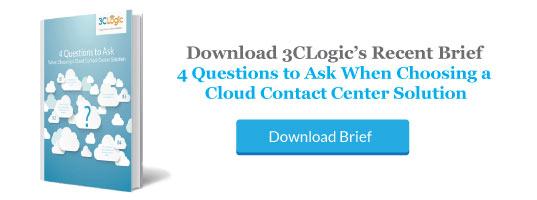While the merits of cloud solutions are widely understood, many of today’s enterprise businesses continue to power client communications with old tried-and-true legacy systems, such as Cisco or Avaya, which have proven to deliver exceptional security and service quality, while facilitating compliance with the latest regulatory standards. But as consumers continue to demand fast and effortless service, many businesses are recognizing the need to adopt a more flexible solution capable of integrating various systems (CRM, Service Management, Call Center Software) and communication channels (voice, email, chat), breaking down departmental siloes, and scaling as quickly as client needs dictate—capabilities only the cloud can truly deliver. And this has left many wondering—must businesses give up the security benefits of the “old” to gain the flexibility benefits of the “new”?
Not so fast
As simple and appealing as replacing old legacy communications platforms with cloud solutions may seem, full-fledged migrations are rarely practical or cost-effective. And while new investments often default to cloud solutions, many businesses still recognize the benefits on-premise platforms provide as it relates to security, quality of service, compliance, and reliability. Simply put—legacy systems aren’t going anywhere, anytime soon. But how can those organizations that wish to continue utilizing premise-based solutions more effectively adapt to the changing customer service landscape?
Merging the tried-and-true with the sleek-and-flexible
The solution?—converging an enterprise’s existing on-premise systems and infrastructure with a cloud-based communications platform, such as 3CLogic’s, to create a “hybrid” solution, a more versatile and practical answer for today’s enterprise businesses. So what are the benefits of merging the two? First and foremost, businesses no longer will be forced to increase investments in their legacy systems (Cisco, Avaya, etc.) to add agents into their contact center, and will instead enjoy the benefits of a pay-per-use business model with enhanced scalability delivered through cloud. Users can also unify all solutions and communication channels under a single roof, breaking down departmental siloes while enhancing agents’ ability to deliver quality service. And with the ability to maintain control over the underlying network, voice quality, and connectivity, and keep existing security protocols intact, businesses no longer have to give up the reliability of their on-premise systems for cloud’s flexibility—they can have the best of both worlds.





